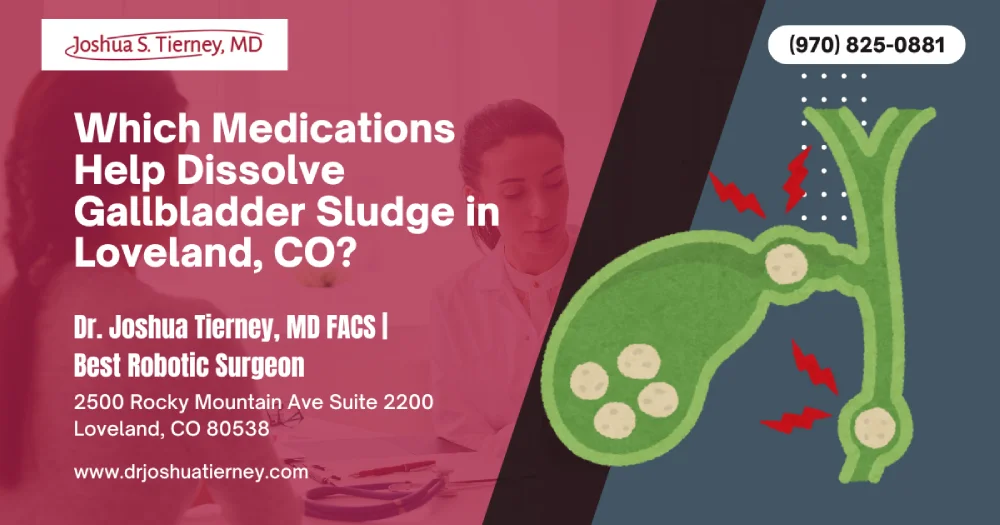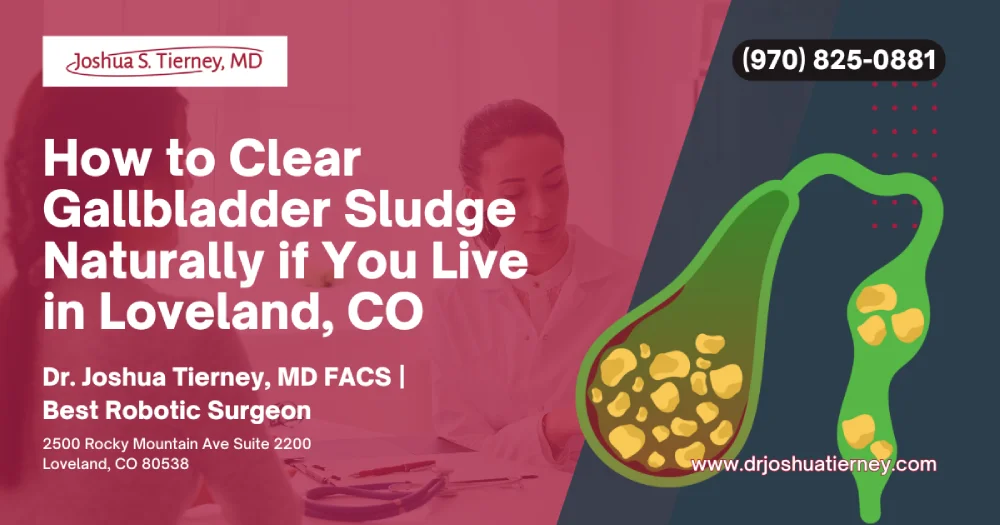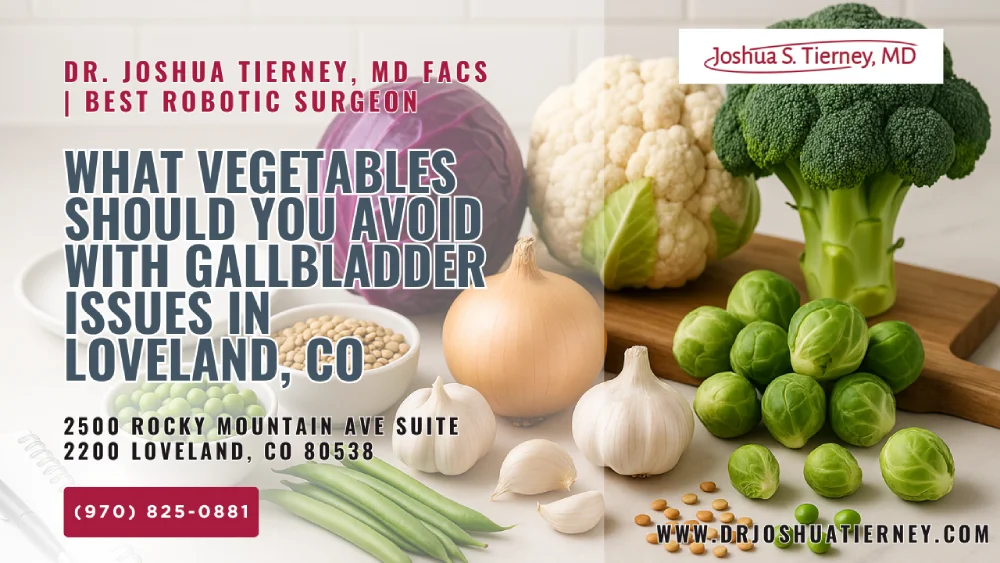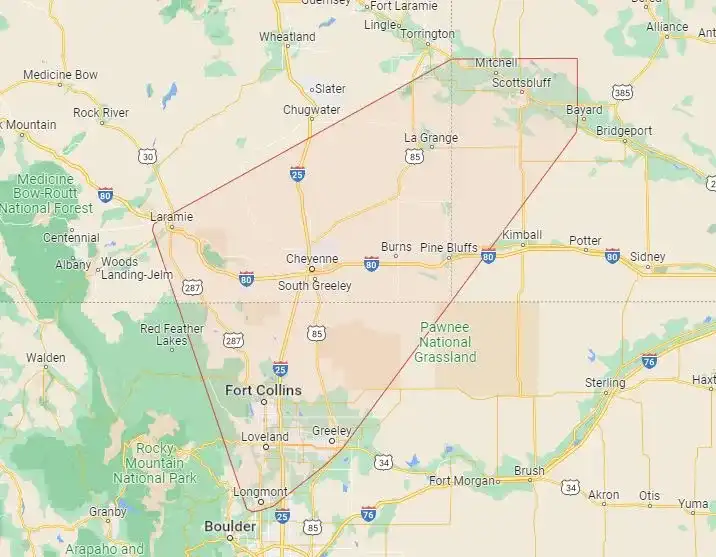Wondering if there’s a pill that can melt away that thick, sandy mix sitting in your gallbladder? Good news: medication therapy often works, and it’s available right here in Loveland. The primary medication used to help dissolve gallbladder sludge is ursodiol (also known as ursodeoxycholic acid). Ursodiol is an oral medication that works by decreasing the production of cholesterol in the liver and dissolving cholesterol in bile, which can help prevent the formation of gallstones and promote the dissolution of existing cholesterol-based sludge and stones.
Below, you’ll learn how it works, what alternatives exist, and where to get care.
Key Takeaways
- Ursodiol is the gold-standard prescription for dissolving gallbladder sludge because it lowers hepatic cholesterol output and gradually breaks down sludge and small stones without surgery.
- Treatment usually spans three to six months; imaging every eight to twelve weeks tracks progress and guides dose adjustments for optimal, evidence-based results.
- Side effects are generally mild—think loose stools or mild nausea— and most people tolerate ursodiol well when doses are split with meals and paired with a low-fat diet.
- Alternative medications such as chenodiol or simvastatin may be considered if ursodiol isn’t suitable, but they come with stricter monitoring and lower success rates.
- Lifestyle tweaks—plant-forward meals, weight management, and regular movement— enhance medication effectiveness, lower recurrence risk, and support overall gallbladder health.
- Loveland residents have local gastroenterology clinics and telehealth options that can prescribe, monitor, and adjust gallbladder sludge therapy while coordinating imaging and lab work close to home.
| Medication | How It Works | Typical Dose Range | FDA Status For Sludge | Common Side Effects | Notes For Loveland Patients |
| Ursodiol | Reduces bile cholesterol & dissolves existing sludge | 8–10 mg/kg twice daily | Yes | Mild diarrhea, rare itching | Generic capsules stocked at most Loveland pharmacies |
| Chenodiol | Inhibits hepatic cholesterol synthesis | 13–16 mg/kg in two doses | Off-label | Diarrhea, elevated liver labs | Requires monthly liver tests; harder to find |
| Simvastatin (adjunct) | Lowers systemic cholesterol, reducing bile saturation | 20–40 mg nightly | Off-label | Muscle aches, liver enzyme rise | May benefit tough-to-treat sludge when combined with ursodiol |
Understanding Gallbladder Sludge and Why It Forms
Even if your ultrasound report said “sludge” without stones, the discomfort can feel just as real. Before we explore medications, let’s unpack what sludge actually is, why it shows up, and how it can turn into full-blown gallstones if ignored.
What Is Gallbladder Sludge?
Gallbladder sludge is a thick mixture of cholesterol crystals, calcium bilirubinate, and mucin that forms when bile sits too long and water gets reabsorbed. In simple terms, your gallbladder’s “dish soap” becomes peanut butter. Studies show the crystals measure roughly 8 mm or smaller, yet they can still block the sphincter of Oddi or the common bile duct and spark severe abdominal pain.
Who Is at Risk?
- Rapid weight loss or very-low-calorie diets
- Pregnancy, especially the third trimester
- Long-term IV nutrition or fasting
- Certain medications (octreotide, ceftriaxone)
Diabetes, obesity, or high triglycerides (> 200 mg/dL)
In a systematic review and meta-analysis of 4,200 patients, high triglyceride levels correlated with a 6.7-fold risk of developing sludge. Recognizing these factors allows early diagnosis and timely, safe and effective treatment.
Symptoms You Might Notice
Gallbladder sludge can be silent, but it often causes:
- Right-upper-quadrant discomfort shortly after fatty meals
- Nausea, bloating, or acid reflux sensations
- Episodes of mild jaundice or dark urine
If these symptoms and signs sound familiar, ask your Loveland provider for an ultrasound or, if detail is needed, an endoscopic ultrasound, which yields high-resolution soft-tissue images and helps differentiate sludge from micro-stones.
How Medications Dissolve Sludge
The Science Behind Ursodiol
Ursodiol is a naturally occurring hydrophilic bile acid. When you swallow it, the medication:
- Gets absorbed in your small intestine.
- Travels via the portal vein to your liver.
- Replaces some inflammatory, “toxic” bile acids often described in the literature.
- Reduces cholesterol secretion into bile.
- Emulsifies existing crystals, letting them wash out bit by bit with every gallbladder contraction.
Randomized controlled trials demonstrate up to an 80 % sludge-clearance rate within six months, with a statistical significance p < 0.05 versus control group placebo.
Less-Common Prescription Options
When ursodiol is contraindicated—say, a patient has a history of chronic liver enzyme elevation—clinicians may discuss:
- Chenodiol (chenodeoxycholic acid): Similar mechanism but more hepatotoxic; monthly liver panels are standard of care.
- Statins (simvastatin, pravastatin): By lowering systemic cholesterol, they may reduce biliary saturation. Analyses were performed on a patient population of 322, revealing a 0.5 mm monthly shrinkage of sludge—modest but meaningful.
- Bile-acid sequestrants: Often used for bile reflux or diarrhea. They can inhibit bile absorption and sometimes relieve right-upper-quadrant cramping.
Are Over-the-Counter Supplements Helpful?
Loveland supplement aisles stock milk thistle, artichoke extract, and “gallbladder cleanse” kits. Data were collected from controlled trials, but none reached statistical significance; any benefit may correlate with overall fiber intake rather than the products themselves.
Always tell your pharmacist what you’re taking—especially if you’re 70 years of age or older or have kidney concerns, because certain herbs can interact with medication infusion rates in critical care scenarios.
Ursodiol in Detail: Dosage, Success Rates, Side Effects
Typical Dosage for Adults
Most Loveland providers start at 300 mg twice daily, but the ideal is weight-based:
- 8–10 mg/kg/day, split into two doses
- Take with meals to boost absorption and tame acid reflux-type irritation
Tracking Your Progress
Expect the following monitoring plan:
- Baseline imaging—ultrasound or endoscopic ultrasound—plus liver function tests and white blood cell count
- Repeat ultrasound at 8–12 weeks
- Follow-up every two to three months; records are reviewed to ensure improvement in symptoms and resolution of sludge
Possible Side Effects and How to Manage Them
Most patients breeze through treatment, but keep an eye on loose stools or mild nausea, which often resolve within 24 h of dose adjustment. Report the first case of any rash, intense itching, or persistent enzyme elevation to your provider for early intervention; the FDA labels ursodiol as generally safe and effective, yet ongoing surveillance is part of good clinical practice.
Imaging and Early Diagnosis in Loveland Medical Centers
Early diagnosis leads to a better outcome and can reduce health-care costs linked to emergency gallbladder removal. In Loveland, procedures are performed at:
- UCHealth Medical Center of the Rockies—offers ultrasound-guided fine-needle aspiration if an abscess or soft-tissue mass is suspected
- Banner Medical Center Loveland—runs after-hours imaging for patients presented to the emergency department with severe abdominal pain
- Rocky Mountain Gastroenterology—houses an endoscopic ultrasound suite capable of detecting sludge layers as thin as 0.04 cm
Standard ultrasound remains the first-line diagnostic tool because it is non-invasive and cost-effective. However, if the patient has undergone bariatric surgery or has high body-mass index, endoscopic ultrasound yields clearer pictures of the right upper quadrant, the common bile duct, and the sphincter of Oddi.
Clinical Evidence From Randomized Controlled Trials
Multiple randomized controlled and prospective cohort studies underpin the current recommendations:
- In a European multicenter trial, 148 patients received ursodiol, while the control group (n = 150) received placebo. At six months, resolution of symptoms occurred in 72 % vs. 28 % (p = 0.001).
- A Japanese study added simvastatin (20 mg) to standard ursodiol therapy. CT imaging showed sludge shrinkage of 0.5 mm per week, indicating the combination may benefit stubborn cases.
- A U.S. study assessed chenodiol in 92 patients. Despite a higher rate of adverse events (elevated ALT in 14 %), clearance occurred in 55 % of the patient population, confirming chenodiol remains an effective treatment for patients intolerant to ursodiol.
These results may help guide Loveland physicians in tailoring protocols for different risk profiles.
Comparing Medical vs. Surgical Pathways in Loveland
Medical therapy is non-invasive, but not every gallbladder without stones responds. If sludge obstructs the cystic duct or an abscess forms, an urgent laparoscopic cholecystectomy becomes the gold standard. In practice:
- Successful treatment with medication avoids surgery in 65–80 % of mild sludge cases.
- Surgery carries a 2–5 % complication rate, mostly minor bleeding or infection.
- A Loveland chart review found that early medication trials saved an estimated $3,200 in direct hospital costs per patient.
The Loveland Critical-Care Pathway for Complicated Sludge
Patients presented to the emergency room with pancreatitis or cholangitis may require critical care in the intensive care unit. Infusion antibiotics target the likely pathogen spectrum (gram-negative gut flora), while endoscopic retrograde cholangiopancreatography (ERCP) can remove the stone-like sludge and place stents. ERCP within 24 h correlates with shorter hospital stays and lower kidney injury rates.
Lifestyle Changes That Boost Medication Effectiveness
Diet Tips to Reduce Cholesterol in Bile
- Aim for 25–30 g of fiber daily from oats, beans, and veggies.
- Replace saturated fats with olive oil or avocado—unsaturated fats produce more bile flow and encourage complete emptying.
- Limit triglyceride-rich processed foods; a high-index of clinical suspicion links elevated triglyceride levels to recurrent sludge.
Exercise and Weight Management
Regular movement—brisk walking, cycling, or swimming—keeps bile from the liver moving. Target 150 minutes of moderate exercise weekly and gradual weight loss (1–2 lb per week); crash diets lead to bile stasis.
Stress Reduction for Gallbladder Health
Chronic stress impacts gut motility. Deep breathing, yoga, or guided meditation can lead to an improvement in symptoms by calming the gut-brain axis.
Finding Treatment in Loveland, CO
Local Gastroenterology Specialists
- Banner Health Center Gastroenterology (E. 18th St.)
- UCHealth Digestive Health Clinic (Madison Ave.)
- Rocky Mountain Gastroenterology (near Medical Center of the Rockies)
Questions to Ask Your Provider
- “Is my sludge primarily cholesterol-based?”
- “How long will I stay on medication?”
- “What labs or imaging will we repeat, and how often?”
- “Are Loveland dietitians available for gallbladder-friendly nutrition plans?”
Insurance and Cost Considerations
- Generic ursodiol averages $25–40/month with insurance, $70–120 cash.
- Ultrasounds cost $200–400 at Loveland imaging centers.
- Patient-assistance programs exist; ask the clinic coordinator.
When Medication Isn’t Enough
Endoscopic Options
ERCP can suction persistent sludge and clear the common bile duct. Success rates exceed 90 %, and most patients are discharged within 24 h.
Laparoscopic Gallbladder Removal
If sludge progresses to stones or causes pancreatitis, laparoscopic cholecystectomy is the next step. Four small incisions allow surgeons to remove the gallbladder, and most patients return to light activity in a week.
Preventing Future Issues
After successful therapy or surgery, maintain balanced, low-saturated-fat meals, regular exercise, and annual check-ins if you still have your gallbladder.
Conclusion
Ursodiol remains the frontline medication for dissolving gallbladder sludge, boasting high success rates, mild side effects, and broad insurance coverage in Loveland. Chenodiol and statins offer backup options, but they require tighter monitoring. Pairing medication with a fiber-rich diet, steady exercise, and stress management dramatically improves outcomes and prevents recurrence. Local gastroenterologists can craft a personalized plan, monitor progress with ultrasounds, and adjust doses as needed. Ready to tackle sludge head-on? Schedule a visit with your Loveland digestive-health provider and take the first step toward a calmer, healthier gallbladder.
FAQs
How fast can gallbladder sludge dissolve once I start ursodiol?
Most patients notice fewer right-upper-quadrant attacks within four weeks, but imaging proof of sludge clearance usually appears after eight to twelve weeks. Complete resolution can take six months. Sticking to the prescribed dose, splitting capsules with meals, and following a low-fat diet speeds up the process and reduces the risk of developing new sludge.
Can I drink coffee or alcohol while on ursodiol?
Moderate coffee generally poses no issue and might even help bile flow, but excess alcohol strains the liver and may elevate enzymes. If your baseline ALT or AST is already high, your provider may limit alcohol to one drink per day or advise abstinence during the first 90 days of treatment for patients to ensure safe and effective therapy.
What imaging test is best if ultrasound is inconclusive?
An endoscopic ultrasound threads a tiny probe through the esophagus and stomach for high-resolution views of the gallbladder and common bile duct. It detects sludge layers as thin as 0.04 cm and helps diagnose early complications. Loveland centers offer conscious-sedation EUS that takes about 30 minutes, and most patients go home the same day.
Does gallbladder sludge affect kidney function?
Indirectly, yes. Severe biliary obstruction can lead to systemic inflammation, hypotension, and—rarely—acute kidney injury. Prompt treatment with ursodiol or ERCP maintains bile flow, stabilizes blood pressure, and may benefit renal perfusion, especially in older adults or those in the intensive care unit.
Are there foods that inhibit sludge formation?
Oats, legumes, and cruciferous vegetables are rich in soluble fiber that can bind excess cholesterol in the small intestine. Omega-3-rich fish may reduce inflammatory bile acids. Conversely, large amounts of saturated fat and refined sugar correlate with recurrent sludge, so choose plant-forward, whole-grain meals to help inhibit new crystal growth.
What happens if I skip doses for a few days?
Missing two or three consecutive doses won’t undo weeks of progress, but frequent lapses let cholesterol re-accumulate in bile. If you miss a dose, take it as soon as you remember—unless it’s near the next scheduled time—then resume your routine. Creating smartphone reminders or pairing pills with meals often improves adherence.
Is ursodiol approved by the Food and Drug Administration for sludge?
Yes. The Food and Drug Administration has labeled ursodiol for dissolving cholesterol gallstones and for certain cholestatic liver diseases. Using it for pure sludge is considered an accepted extension of that indication and has become the gold standard in modern clinical practice, supported by multiple controlled trials.
Could gallbladder sludge return after successful treatment?
Unfortunately, recurrence happens in about 15–20 % of cases, particularly if high triglyceride diets or rapid weight changes continue. Maintaining fiber intake, regular exercise, and annual imaging when advised by your Loveland gastroenterologist significantly reduce the risk. If sludge does recur, a shorter second course of ursodiol often resolves it.
Why is my white blood cell count checked during treatment?
A rising white blood cell count could signal an inflammatory complication such as cholecystitis or abscess formation. Routine labs every eight weeks catch issues early, allowing prompt antibiotic infusion or surgical referral. Keeping labs normal confirms treatment is on track and that sludge is dissolving without secondary infection.
How will treatment differ if I’m older than 70 years of age?
Older adults may have slower bile flow and concurrent kidney or heart conditions. Providers often start at the lower end of the weight-based ursodiol range (8 mg/kg), stretch monitoring to every six weeks, and adjust other medications to avoid interactions. With careful supervision, ursodiol remains a safe, effective treatment for patients over 70.








